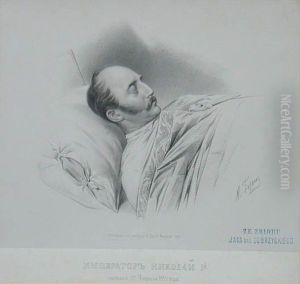Maksymilian Fajans Paintings
Maksymilian Fajans was a Polish-Jewish graphic artist and lithographer, born in 1825 in Warsaw, Poland, which at the time was part of the Russian Empire following the partitions of Poland. Fajans was recognized for his significant contributions to the development of graphic arts in Poland during the 19th century.
Fajans began his artistic education in Warsaw and later continued his studies abroad. His talent in graphic arts, particularly in lithography, was evident from a young age. He mastered the technique of lithography, which involves creating images on a stone surface and using it to print on paper, and he became one of the most prominent lithographers in Warsaw.
Throughout his career, Fajans was deeply involved in the cultural life of Warsaw and was connected with many intellectuals and artists of his time. He worked on numerous projects, including illustrations for books and periodicals, as well as creating portraits, landscapes, and genre scenes that captured the spirit of Polish society.
His works often reflected his interest in the daily life of the Polish people, as well as historical events. One of his notable series was a collection of lithographs depicting the January Uprising of 1863, a national insurrection against the Russian Empire's rule. Fajans' lithographs from this series are considered important historical documents that captured the essence of this pivotal moment in Polish history.
Maksymilian Fajans also contributed to the industrial side of graphic arts, establishing a lithographic printing house in Warsaw. His printing house produced not only artistic prints but also commercial and technical works, demonstrating the diverse applications of lithography.
Fajans' influence extended beyond his own artworks. He played a crucial role in educating and inspiring the next generation of Polish artists in the field of graphic arts. His commitment to lithography and his efforts to promote the medium contributed to its popularity and development in Poland.
Maksymilian Fajans passed away in 1890, leaving behind a legacy as one of the leading figures in Polish graphic arts. His works continue to be appreciated for their technical mastery and their insightful reflection of Polish culture and history.



